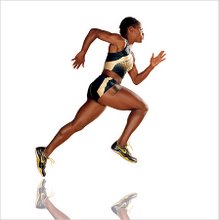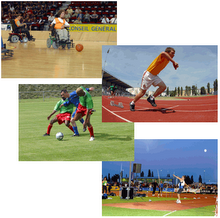
Better performance is achieved by consistent training, and workout time lost due to injury will make reaching your goals much harder. This months performance tip centers on injury prevention. Given that overuse injuries are very common in runners, the early recognition of factors that predispose to injury is very important. The first concept to appreciate is that overuse injuries are the result of small amounts of damage summed up over a long period of time. A slight deviation in motion or strength can, over time, lead to a big problem. You may be happily running along for weeks or months without noticing anything, but the injury is slowly developing. When it does finally hit often the underlying problem goes undetected. After all, why would you suspect your foot to be the cause of your back pain?
Although there are many possible areas of abnormal biomechanics, a common one, sometimes overlooked, is the pelvis. Abnormal pelvic motion during running can put undue strain on a variety of structures and lead to overuse problems. However, before you begin cursing your pelvis, understand that sometimes abnormal pelvic motion is merely a result of a problem elsewhere. Looking at, and correcting, abnormal pelvic motion can help you discover these hidden problems.
To appreciate the abnormalities that may occur in running, picture a box around the pelvis (fig.1). The two most common situations are,
1. the pelvis is tilted forward (anterior tilt); slightly rotate the box forward
2. one side of the pelvis is lower than the other (lateral tilt); slightly tip the box to one side.
Each of these abnormalities has its own specific range of problems (see table 1), and sometimes both can occur.
1. the pelvis is tilted forward (anterior tilt); slightly rotate the box forward
2. one side of the pelvis is lower than the other (lateral tilt); slightly tip the box to one side.
Each of these abnormalities has its own specific range of problems (see table 1), and sometimes both can occur.














Hiç yorum yok:
Yorum Gönder